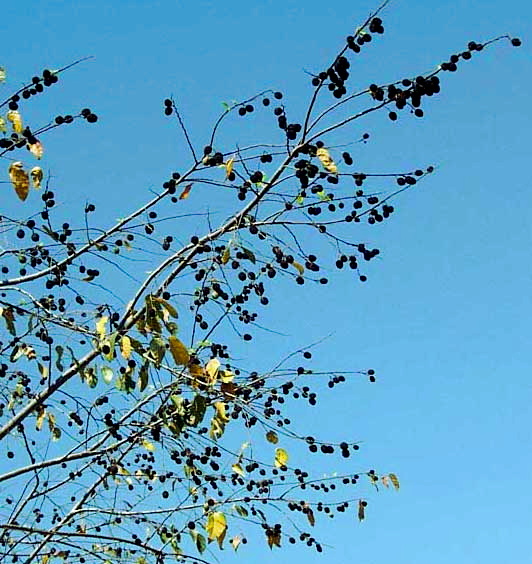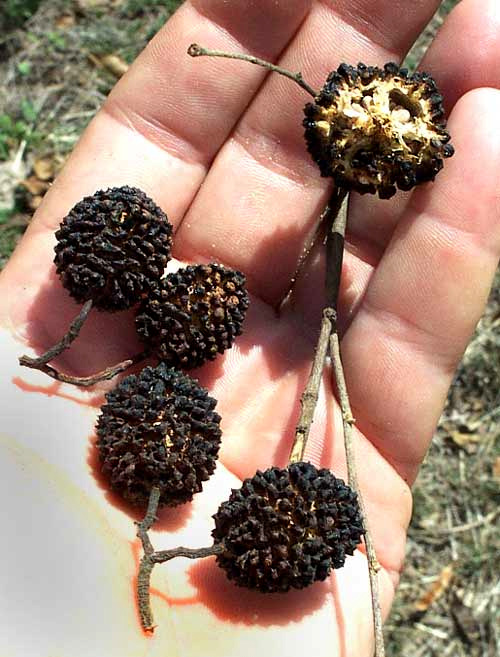Excerpts from Jim Conrad's
Naturalist Newsletter
from the April 28, 2007 Newsletter issued from Sierra Gorda Biosphere Reserve, QUERÉTARO, MÉXICO
AQUICHE AT ITS UGLY TIME
Early this week I accompanied a group of foreign visitors on a late-afternoon hike down the reservoir road. One plant that really got that group's attention was the Aquiche. For one thing, Aquiche is probably our second-most abundant roadside tree, after the Sweet Acacia. For another, people just couldn't believe a tree could look so disheveled and ugly. The poor scraggly thing was mostly leafless, with only a few tattered, faded, bug-eaten leaves giving it a hang-dog look, and then it was absolutely loaded with black, bumpy-looking, hard, scratchy fruits. You can see what I'm talking about below:

You can see a close-up of some fruits in my hand below:

Actually, I've told you about Aquiche before, because also back in the Yucatan this was one of the most common roadside "weed trees." In the Yucatan the Maya call it Pixoy, and in other parts of Mexico it's often called Guácima. It's GUAZUMA ULMIFOLIA, a member of the same family the Cacao tree of chocolate fame belongs to, the Sterculiaceae.
Beneath many Aquiche trees nowadays the ground is thick with black fruits. When you approach such a tree on a hot, sunny day a strong honey odor hangs in the air. That's because the fruits are very slightly sweet. In sunlight you can see "honey droplets" glistening in cracks between the fruits' bumps. In fact, when you're real hungry you can actually eat the fruits, being careful not to break a tooth. Here Nature has done a masterful job making a fruit that's too hard for most animals to fool with, but just sweet enough to entice someone every now and then to gnaw on one. It's a lot like eating the crusty backbones of Honeylocust fruits. On the Internet I find a report of White-faced Monkeys eating Aquiche fruits in Costa Rica, but only infrequently.
Livestock eat the leaves and workable fiber can be drawn from the branches. My "Plantas Medicinales de Mexico" says that traditionally the tree's bark was used to cure malaria, skin diseases, elephantiasis, leprosy and other ailments.
Some trees loaded with fruits already bear little yellow flowers. Apparently it takes about a year for those tough fruits to mature.